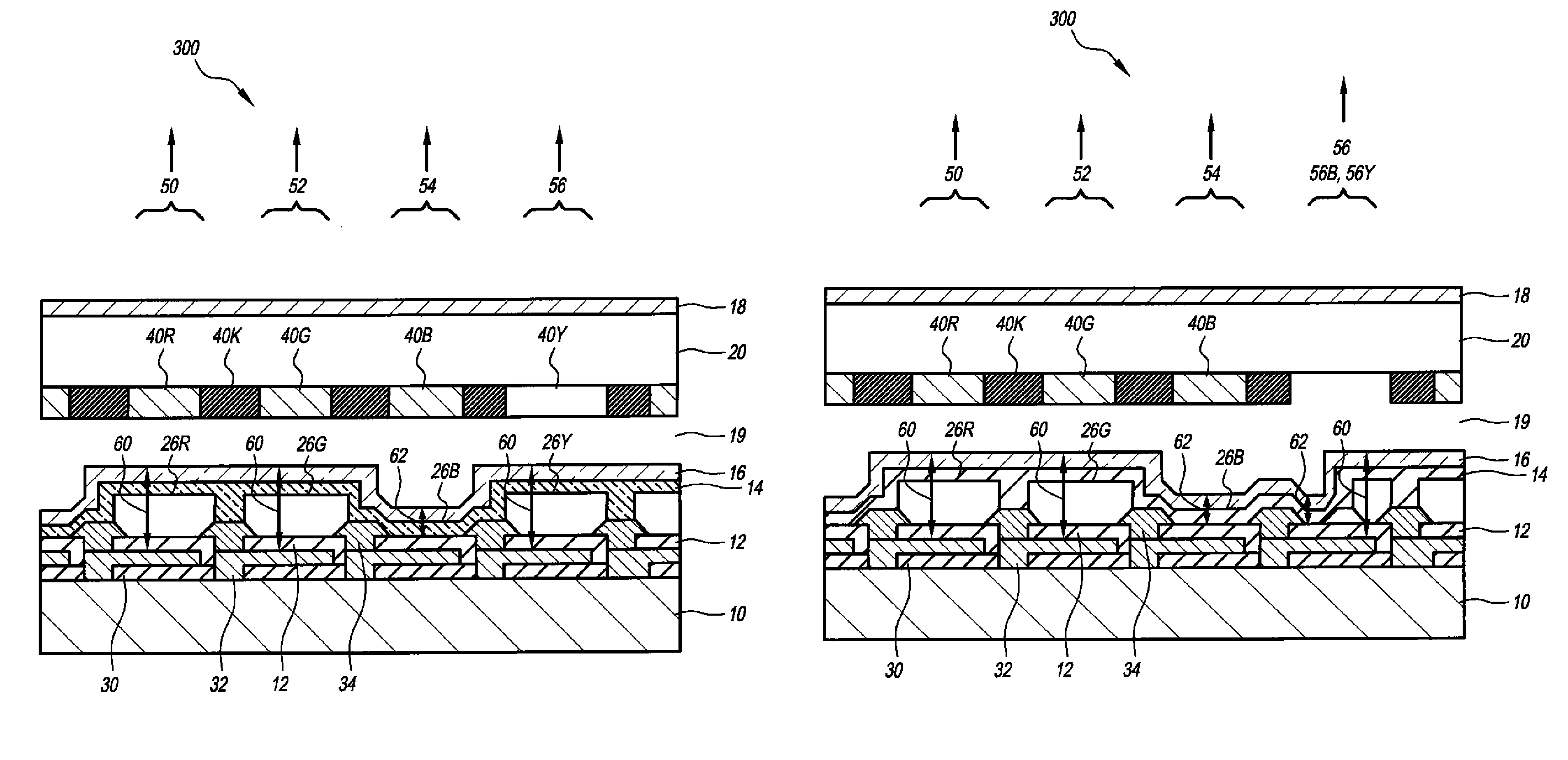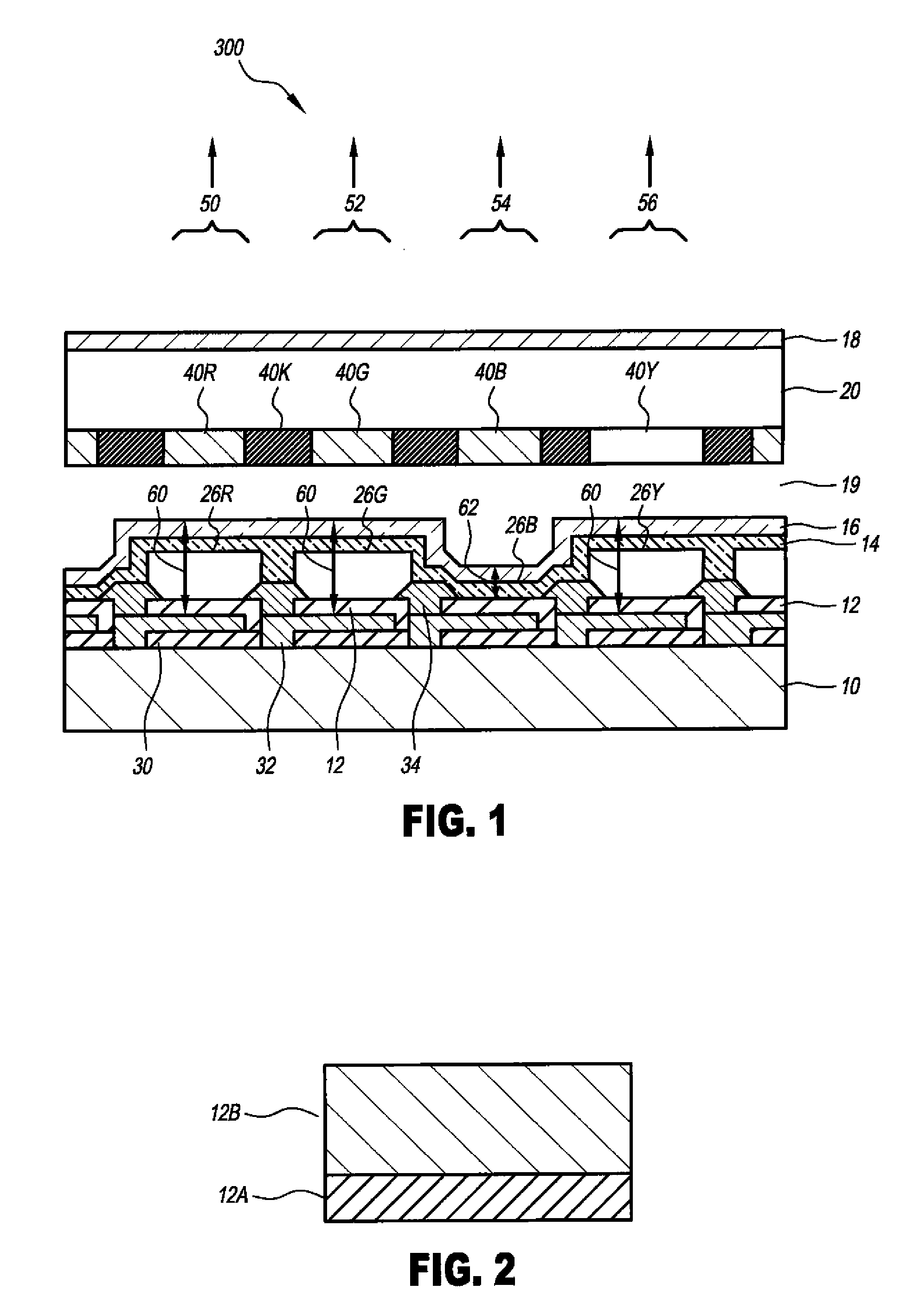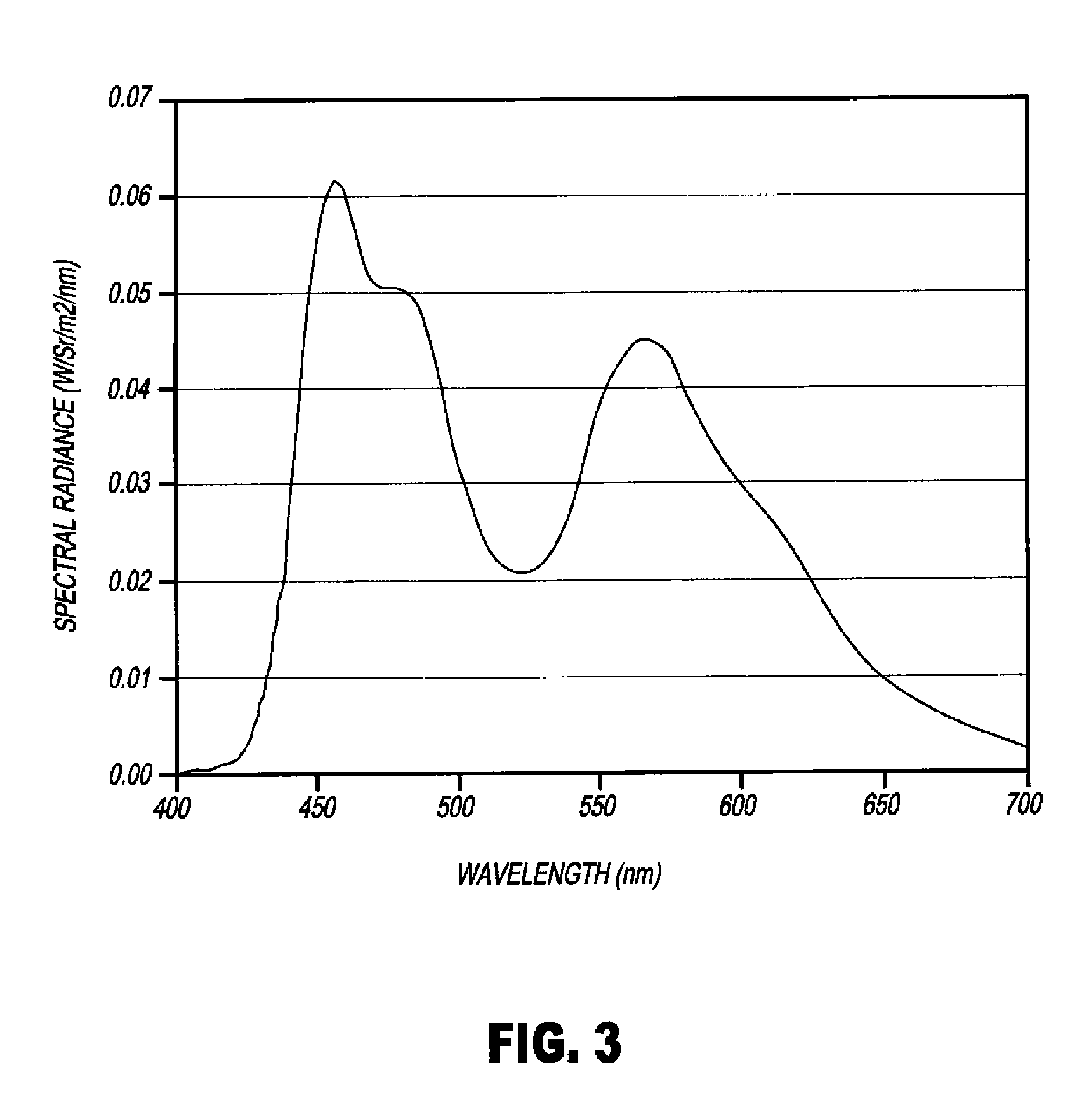LED device having improved light output
a technology of led devices and light output, which is applied in the direction of discharge tubes/lamp details, discharge tubes/lamp details, incadescent envelopes/vessels, etc., can solve the problems of increasing manufacturing costs, reducing device efficiency, and high cost of existing patterning methods, for example employing metal shadow masks, etc., and achieves color gamut and reduces the cost of an led device. , the effect of increasing the light outpu
- Summary
- Abstract
- Description
- Claims
- Application Information
AI Technical Summary
Benefits of technology
Problems solved by technology
Method used
Image
Examples
Embodiment Construction
[0022]Referring to FIG. 1, an exemplary embodiment of a light-emitting diode device 300 according to the present invention comprises a first group of sub-pixels (e.g. 50, 52, 56) each comprising a reflective electrode 12 and a second electrode 16 formed over a substrate 10 with an unpatterned light-emitting layer 14 formed between the reflective electrode 12 and the second electrode 16 to comprise a first optical cavity 60 having a first cavity length, and wherein either the reflective 12 or second electrode 16 is patterned to form two or more independently-controllable, light-emitting sub-pixels (e.g. 50, 52, 56). A second group of sub-pixels (e.g. 54) each comprising a reflective electrode 12 and a second electrode 16 formed over the substrate 10 with the unpatterned light-emitting layer 14 formed between the reflective electrode 12 and the second electrode 16 to comprise a second optical cavity 62 having a second cavity length different from the first cavity length of the first o...
PUM
 Login to View More
Login to View More Abstract
Description
Claims
Application Information
 Login to View More
Login to View More - R&D
- Intellectual Property
- Life Sciences
- Materials
- Tech Scout
- Unparalleled Data Quality
- Higher Quality Content
- 60% Fewer Hallucinations
Browse by: Latest US Patents, China's latest patents, Technical Efficacy Thesaurus, Application Domain, Technology Topic, Popular Technical Reports.
© 2025 PatSnap. All rights reserved.Legal|Privacy policy|Modern Slavery Act Transparency Statement|Sitemap|About US| Contact US: help@patsnap.com



